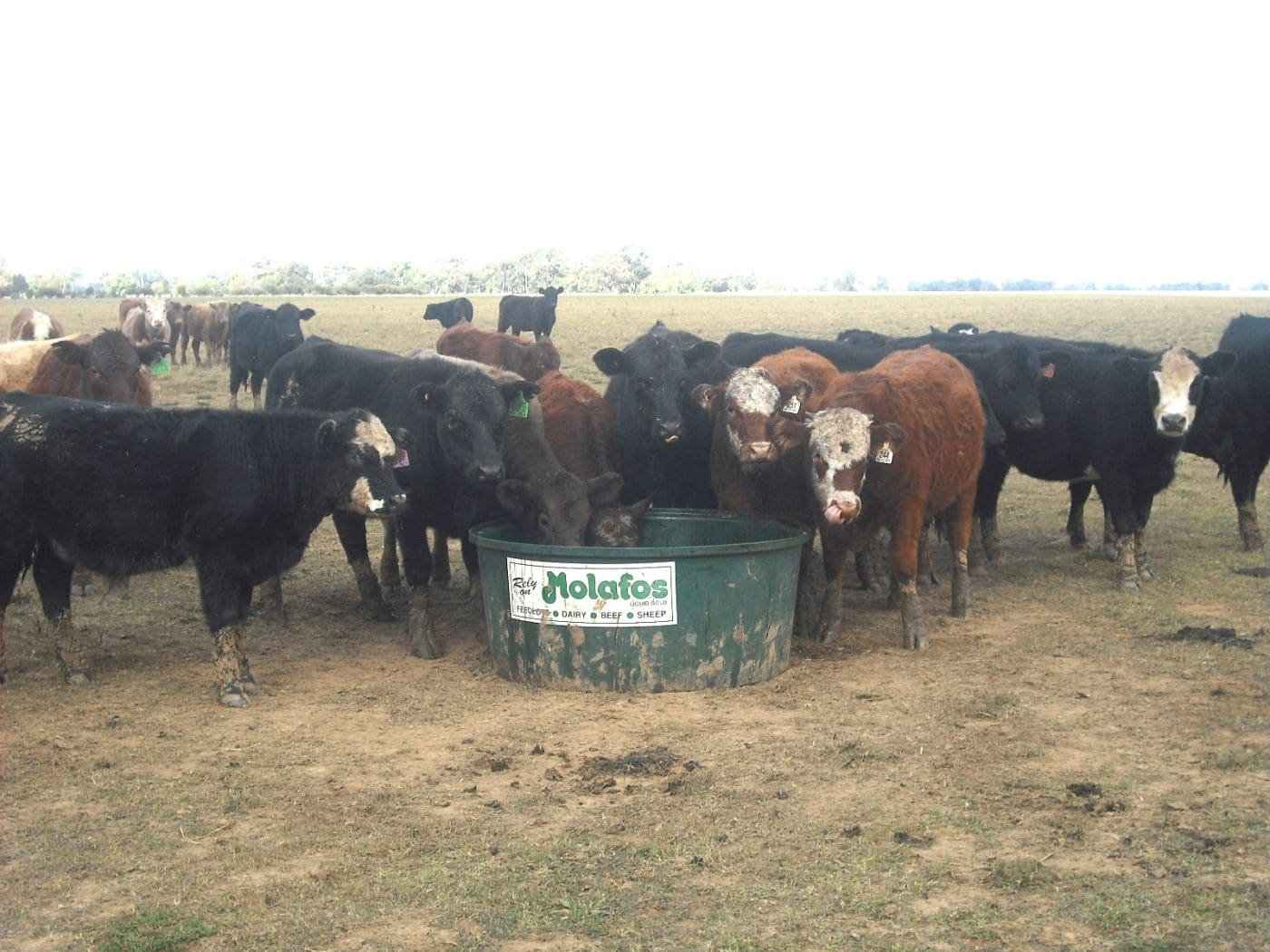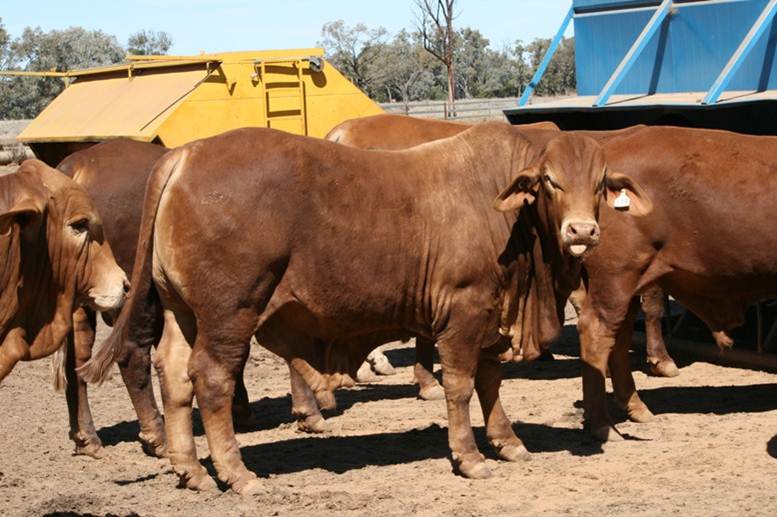SPECTACULAR rises in the cattle market recorded since May have refocussed attention on nutritional support for stock, designed to optimise both calving performance in breeders as well as weightgain in animals destined for slaughter or feedlot.
The trend follows a distinct pattern over the past 18 months where some producers have either abandoned or wound-back supplementation programs, due to financial stress and cash flow problems caused by drought and/or low cattle prices.
But circumstances are rapidly changing.
Here’s some simple comparisons, based on top-sell grid price offers from a large southeast Queensland processor this week, with the same week in July 2014, and again in 2013:
- Grained 100-day steer: 525c today; 390c this time last year (a rise of 34.6pc); and 340c the year before that.
- Grassfed 0-4 tooth ox: 495c today; 315c this time last year (a rise of 180c, or 56.6pc); and 310c in 2013.
- Heavy cow: 485c/kg this week; 280c this time last year (a rise of 205c, or 73pc); and 270c back this time in 2013.
A point worth noting is that the grass/grain ox spread currently is 30c/kg, whereas this time last year, it was 75c. It means grassfed cattle are coming into their own in a big way, and producers are increasingly recognising the financial sense in giving them greater supplementation support to maximise performance .
 Beef Central this week spoke to a range of stockfeed companies covering supplement block, loose lick and liquid feeds, to gauge the sentiment in the marketplace across southern, Central and Northern Queensland and the NT.
Beef Central this week spoke to a range of stockfeed companies covering supplement block, loose lick and liquid feeds, to gauge the sentiment in the marketplace across southern, Central and Northern Queensland and the NT.
All noted a sharp rise in interest in supplement support for stock over the past couple of months.
A little of that can be attributed to normal seasonal cycles, where producers start to think about supplementation as pasture condition and protein declines after early frosts. But on top of that, there’s been a much larger momentum driven by the recent changes in the cattle market.
Brad Monk, sales manager for feedlot and pasture supplements with Graincorp Liquid Feeds, said his company had fielded a lot of phone calls from existing and new customers in the past couple of months looking at production feeding steers through supplementation to gain the most from the current cattle prices on offer.
“Certainly, given what has happened in the cattle market, we’ve seen a rapid rise in interest in investment in supplementation both for weight gain and breeder performance,” Mr Monk said.
“During the two preceding years where cattle income was greatly reduced, supplementation was sacrificed in some cases. On top of the drought, it’s meant that some areas declined in weaning rates by 10-20pc or more. But all of a sudden, producers are talking about production feeding for cow performance and weaners – like I have never seen before,” he said.
“But unfortunately, some producers are also caught in a pincer grip – knowing they should be responding, but who have come out of two really tough seasons in a very tight cash-flow situation. It can be hard to convince a bank manager that you want to spend perhaps another $200,000 on a supplement program, when their financial position is so tight. ”
“My response to a customer when they tell me they cannot afford to supplement, is that they cannot afford not to, in a year like this,” Mr Monk said.
“People are just trying to work out what delivers the best return on their spend.”
“Don’t want to miss price opportunity”
A large Queensland lick block manufacturer agreed with is sentiment, saying there was “a lot of noise in the market” that producers were again showing clear signs of wanting to invest more heavily in nutrition, in order to maximise both weightgain and fertility performance in their cattle.
“That’s obviously being driven squarely by the sharp rises in cattle prices,” he said.
“Producers don’t want to miss out on a weightgain/growth rate opportunity, or in next year’s calf drop, while ever prices are as high as they are, and likely to rise further.”
The block manufacturer, who asked not be identified, said he had recently returned from a sales visit to the NT, where he detected the same “positive, upbeat” mood about supplementation as in Queensland.
“They’re even talking about wet-season increments of feeding,” he said. “There’s so much good noise there at the moment, that people are encouraged to again invest more heavily in their cattle.”
“Some of the bigger players, who may not have sacrificed their supplementation programs so much over the past two years, are looking at upgrading to better quality diets – moving from a ‘maintenance’ to a ‘production’ feeding focus. Dollars return on cattle has had a lot to do with that, and nobody wants to miss out on the opportunities that lie ahead.”
“We’re seeing that especially in those custom mixes that we do for larger clients. They’re spending a little more money, moving from cheaper raw materials to better ingredients, perhaps a little more protein, and more accessible protein, in their diet.”
“The return on the investment in supplementation is going to be the big thing now. With cattle prices as strong as they are, and continuing to grow, nobody wants to miss out on an opportunity.”
“Some are still taking a conservative approach, focussing on paying back debt, but equally they are eager to get out and spend some money on better supplementation. And the banks appear to be receptive, knowing the money (cattle prices) is there.”
60-70pc rise in sales
Rockhampton-based stockfeeds supplier, Andrew Childs, principal of Blue Ribbon Stockfeeds, said his business was running ‘flat-out’ at the moment, as producers reacted to that extra money that was on offer in the cattle market.
 “There were a few that pre-empted the big shift in market prices, as they could see the clouds brewing on the horizon, but since cattle prices started to rise, that has risen quite dramatically,” he said.
“There were a few that pre-empted the big shift in market prices, as they could see the clouds brewing on the horizon, but since cattle prices started to rise, that has risen quite dramatically,” he said.
“Customers generally are not looking for a maintenance ration at the moment. It’s all about production – adding weight to cash-in on the prices. I’d say that part of our business would be up 60-70 percent on where it normally is at this time of year.”
Coinciding with the cattle price movement, local producers in Blue Ribbon’s catchment area had realised that pasture was running out of steam, and they would have to supplement to push cattle along.
“In our case, our loose-lick sales have remained the same, or even declined a little, replaced with more production feeding, for weightgain on steers, cull heifer and cull cows. That’s mostly through grain-based self-feeders in the paddock,” Mr Childs said.
“We’d expect to see breeder supplement programs designed to get females in good condition to get back into calf later this year to expand during August-October – but the current emphasis is on putting weight onto cattle over 40-50 days to sell.”
He said there had been a noticeable decline in production feeding for weightgain and pregnancy performance over the past 18 months, replaced by more ‘survival’ feeding in those areas that had suffered worst from drought.
“In some cases people perhaps just did not have the cattle left to spend it on. With the prices last year, many producers just offloaded them and lost money, which was unfortunate.”
NAPCo feeds regardless
Beef Central contacted North Australian Pastoral Co to find out how the company was approaching its nutrition management in a year like this.
NAPCo’s general manager, growing and marketing, Geoff Kingston, said his company was a “member of the supplementary feeding religion,” meaning it had not really backed-off support programs for breeders or growing cattle, despite the lower cattle prices over the past two years.
“If nothing else, we tend to think of nutrition first, nutrition second and nutrition third, because that drives survivability in the first instance, pregnancy rate in the second instance, and weight gain in the third,” he said.
“In our production environment, if we are not supplementing, we’re kidding ourself. All our sums show that for every dollar spent, we get two-dollars back. We certainly have not let poor recent cattle prices interfere with our supplementation decisions,” Mr Kingston said.
“It will rain again. And when that happens, you want that animals to be back in full production as quickly as possible, to maximise any advantage in today’s higher prices. And prior to that, you don’t want them to slip any further, because the time taken to get back to where they were is magnified.”
“It may involve taking a bit of pain now, but we think the rewards down the track will cover it.”
Mr Kingston said NAPCo tended to be ‘regimented and targeted’ at supplementation from years to year, and did not want to spend a cent more than it had to, in order to optimise the outcome.
“We’re targeted at the groups of cattle we feed, and when we commence feeding them,” he said. “As part of that, we have a close relationship with our nutritionist, working out the most cost effective solutions.”
Having said that, NAPCo has spent no more than $25/head annually on breeders, on average, over the past couple of years, across all breeder properties.
Tomorrow: Charters Towers beef producers Matt and Nicole Stevenson from Moonoomoo outline the impact of their move to a production feeding focus which has delivered a dramatic increase in branding rates in a very dry year.



You better believe it .